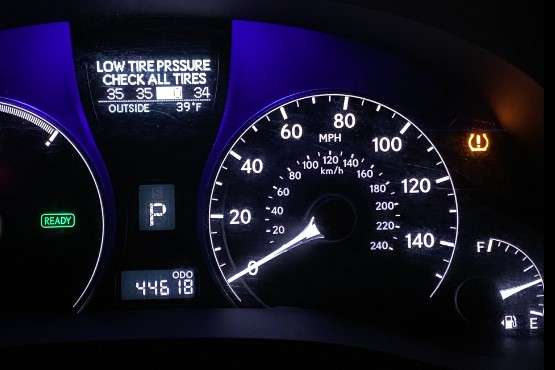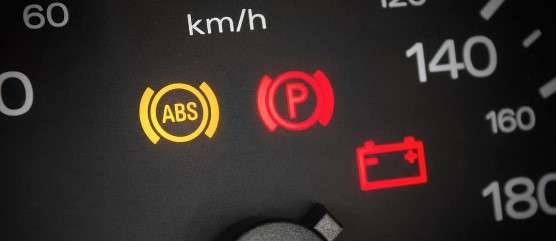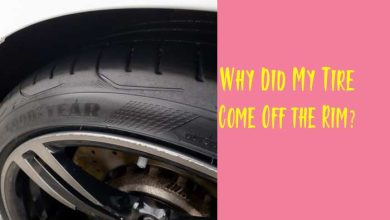Lexus RX 350 Tire Pressure | Perfect Tire Pressure For RX 350
If you’re a Lexus RX 350 owner, you know this luxury SUV deserves the best care. One crucial aspect of that care is maintaining the right tire pressure. As a self-proclaimed tire expert, I’m here to provide all the information you need to keep your Lexus RX 350 tires in top shape.
In this blog post, we’ll dive deep into the world of tire pressure, covering signs of low pressure, how to reset your tire pressure system, recommended tire pressure, and how to check it. Buckle up, and let’s roll!
The recommended tire pressure for a Lexus RX 350 is 33 psi in both the front and rear tires. This information can be found in the owner’s manual and on a sticker on the frame of the left front door.
Sign That Your Lexus RX 350 Tire Pressure is Low
Your Lexus RX 350 is a high-performance vehicle, and maintaining the right tire pressure is crucial for its safety and performance. But how can you tell if your tire pressure is low? Here are a few signs to watch out for:

1. Increased Fuel Consumption
If you’ve noticed that you’re making more pit stops at the gas station lately, low tire pressure could be the culprit. Underinflated tires create more rolling resistance, which leads to increased fuel consumption.
2. Uneven Tire Wear
Inspect your tires regularly. If the edges wear out faster than the centre, it shows low tire pressure. This uneven wear can lead to costly replacements down the road.
3. Poor Handling
Low tire pressure can affect your car’s handling, making it feel sluggish or less responsive. Check the tire pressure if your Lexus RX 350 doesn’t handle the road like it used to.
4. Dashboard Warning Light
Modern vehicles like the Lexus RX 350 have a Tire Pressure Monitoring System (TPMS). A warning light will illuminate your dashboard if the system detects low tire pressure. Don’t ignore it; check your tire pressure.
Read More: Kia K5 Tire Pressure
How do you reset the Lexus RX tire pressure system?
Now that you know the signs of low tire pressure, you must know how to reset your Lexus RX 350’s tire pressure system. Follow these simple steps:
1. Park Your Vehicle
Ensure your Lexus is parked safely and turned off.
2. Locate the TPMS Button

Next, locate the TPMS button. The Lexus RX 350 is typically found under the steering wheel, near the driver’s door.
3. Turn the Ignition On
Without starting the engine, turn the ignition to the “On” position.
4. Press and Hold the TPMS Button
Press and hold the TPMS button until the warning light on your dashboard blinks three times. This indicates that the system is resetting.
5. Wait for Confirmation
After releasing the button, wait a few minutes until you hear a beep. This sound confirms that the TPMS system has been reset successfully.
What’s the Recommended Tire Pressure for a Lexus RX 350?
What’s the Recommended Tire Pressure for a Lexus RX 350? The recommended tire pressure for a Lexus RX 350 is 33 psi for both the front and rear tires. This is the recommendation for most Lexus RX 350 models made after 2015.

The recommended tire pressure may be slightly lower for older models, so it is always best to consult your owner’s manual.
How do you check Lexus RX 350 tire pressure?
Checking your Lexus RX 350’s tire pressure is a straightforward process that you can do at home. Here’s how:
1. Gather Your Tools
You’ll need a tire pressure gauge, which you can purchase at an auto parts store or online.
2. Know the Right Time
Measure the tire pressure when the tires are cold. If you’ve been driving, wait for at least three hours for them to cool down.
3. Remove the Valve Cap
Unscrew the valve cap from the tire’s valve stem.
4. Attach the Gauge
Press the gauge onto the valve stem to get a reading. Ensure it’s secure to prevent air from escaping.
5. Read the Pressure
The gauge will display the current pressure in PSI. Compare this reading to the recommended pressure in your owner’s manual.

6. Inflate or Deflate
If the pressure is too low, add air until you reach the recommended PSI. If it’s too high, release some air.
7. Replace the Valve Cap
Once you’ve achieved the correct pressure, replace the valve cap, ensuring it’s snug.
8. Repeat for All Tires
Don’t forget to check all four tires, including the spare, if your Lexus RX 350 is equipped with one.
Frequently Asked Questions
What is the correct tire pressure for a Lexus?
The correct tire pressure for a Lexus varies slightly depending on the model and year. However, it typically falls within the range of 30 to 35 PSI. For precise information, consult your owner’s manual or the placard on your vehicle’s door jamb.
Is 35 tire pressure too high?
A tire pressure of 35 PSI is generally not too high for a Lexus RX 350 as long as it falls within the recommended range. Refer to your owner’s manual for the exact tire pressure specifications for your specific model and trim.
How do you check the PSI on a Lexus RX 350?
Checking the PSI on a Lexus RX 350 is a simple process. You’ll need a tire pressure gauge. Ensure your tires are cold, remove the valve caps, and press the gauge onto the valve stem to get a reading.
How do you check tire pressure on a 2012 Lexus RX 350?
Checking the tire pressure on a 2012 Lexus RX 350 follows the same process as for newer models. Use a tire pressure gauge, ensure the tires are cold, and check the PSI by pressing the gauge onto the valve stem.
Conclusion
Your Lexus RX 350 deserves the best care, and maintaining the right tire pressure is a fundamental part of that care. Properly inflated tires improve your vehicle’s performance and enhance your safety on the road.
Reference Links
Glossary
- TPMS (Tire Pressure Monitoring System): A system that alerts drivers to significant changes in tire pressure, ensuring safety and better vehicle performance.
- PSI (Pounds per Square Inch): A unit of measurement for air pressure in tires and other inflatable objects.
- Owner’s Manual: A document the vehicle manufacturer provides containing essential information about the vehicle’s operation and maintenance.




